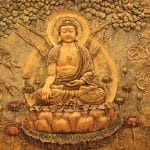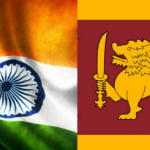Class 7- Science – Chapter 4-Heat
Contents
- Woollen clothes are made from animal fibres. Cotton clothes are made from plant fibres.
- We wear woollen clothes during winters . Woollen clothes keep us warm. We prefer to wear light coloured cotton clothes when it is hot. These give us a feeling of coolness.
HOT AND COLD
- In our day-to-day life, we come across a number of objects. Some of them are hot and some of them are cold.
- Some objects are hotter than others while some are colder than others.
MEASURING TEMPERATURE
- The thermometer that measures our body temperature is called a clinical thermometer.
- A clinical thermometer consists of a long, narrow, uniform glass tube. It has a bulb at one end. This bulb contains mercury. Outside the bulb, a small shining thread of mercury can be seen.
- We will also find a scale on the thermometer. The scale we use is the celsius scale, indicated by °C. A clinical thermometer reads temperature from 35°C to 42°C.
- The temperature of every person may not be 37°C. It could be slightly higher or slightly lower. What we call normal temperature is the average body temperature of a large number of healthy persons.
- The clinical thermometer is designed to measure the temperature of human body only. The temperature of human body normally does not go below 35°C or above 42°C.
LABORATORY THERMOMETER
- To measure the temperature of other objects, there are other thermometers. One such thermometer is known as the laboratory thermometer.
- The range of a laboratory thermometer is generally from –10°C to 110°C.
TRANSFER OF HEAT
- Heat flows from a hotter object to a colder object.
- The process by which heat is transferred from the hotter end to the colder end of an object is known as conduction. In solids, generally, the heat is transferred by the process of conduction.
- The materials which allow heat to pass through them easily are conductors of heat. For examples, aluminum, iron and copper.
- The materials which do not allow heat to pass through them easily are poor conductors of heat such as plastic and wood. Poor conductors are known as insulators. The water and air are poor conductors of heat.
- In the coastal areas during the day, the land gets heated faster than the water. The air over the land becomes hotter and rises up. The cooler air from the sea rushes in towards the land to take its place. The warm air from the land moves towards the sea to complete the cycle.
- The air from the sea is called the sea breeze.
- At night it is exactly the reverse. The water cools down more slowly than the land. So, the cool air from the land moves towards the sea. This is called the land breeze.
- Heat from the sun cannot reach us by conduction or convection as there is no medium such as air in most part of the space between the earth and the sun. From the sun the heat comes to us by radiation.
- The transfer of heat by radiation does not require any medium. It can take place whether a medium is present or not. When we sit in front of a room heater, we get heat by this process. A hot utensil kept away from the flame cools down as it transfers heat to the surroundings by radiation. Our body too, gives heat to the surroundings and receives heat from it by radiation.
- All hot bodies radiate heat. When this heat falls on some object, a part of it is reflected, a part is absorbed and a part may be transmitted. The temperature of the object increases due to the absorbed part of the heat.
- Woollen clothes keep us warm because wool is a poor conductor of heat. Moreover, there is air trapped in between the wool fibres. This air prevents the flow of heat from our body to the cold surroundings. So, we feel warm.Read more…
Class 7 Ch 1 Science- Nutrition in plants
Class 6-Ch-8 Geography : India Climate, Vegetation & Wildlife











